It’s the 10th race in my second career season and to gain valuable resource points I’ve just completed the same practice programmes within F1 2020 for the 32nd time. Throw in the previous iterations of the game, all of which I have played, and the number of times I have driven the Track Acclimatisation test is easily in the hundreds.
Considering that some of these same challenges have been around since F1 2016, I no longer need to be acclimatised to most of the circuits, thanks. But here we go, the same all familiar trudge. All optional, of course, and if you are new to the series, they all feel new and exciting.
Still, this part of the game has been in need of a refresh for quite some time, and while the new-for-2020 My Team reinvigorated the single-player experience, the practice sessions remained all but identical. This is not the case in F1 2021 – rejoice.
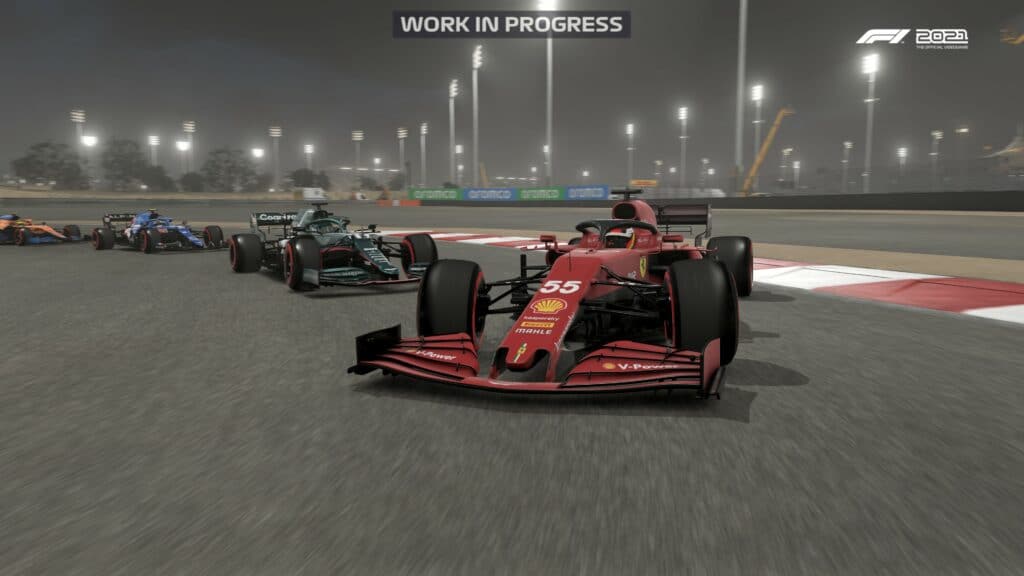
This is why we thought it would be a good idea to dive into the practice sessions and the R&D screens to see how things have evolved for the new season.
It should be noted that this is based upon the limited-time access, work in progress, not complete preview build of F1 2021, so things may change when the finished game is released.
The new Practice Programme setup in F1 2021
In past F1 games, across the three practice sessions of a typical race weekend within My Team or Driver Career, there will be six practice challenges to work through: Track Acclimatisation, Tyre Management, Fuel Management, ERS Management, Qualifying Pace and Race Strategy. Plus, has been a seventh Team Objectives programme which would be something along the lines of setting a time within a practice session with two different car setups.
Completing these dishes out resource points, which in turn can be spent on the development of car parts, improving the performance of your steed.
In F1 2021, when you load into FP1, you are greeted with a newly designed screen, in keeping with the games entirely revised menu aesthetic. You now only have the choice of three challenges to select from. There are still more than three types, but at each race event, you are allocated a random selection to work through.
These are, in essence, nothing new, there’s simply a lick of paint on the menu.
Except, they are augmented by additional development boosts. These boosts are three optional sub-quests, paying out in the form of development part discounts.
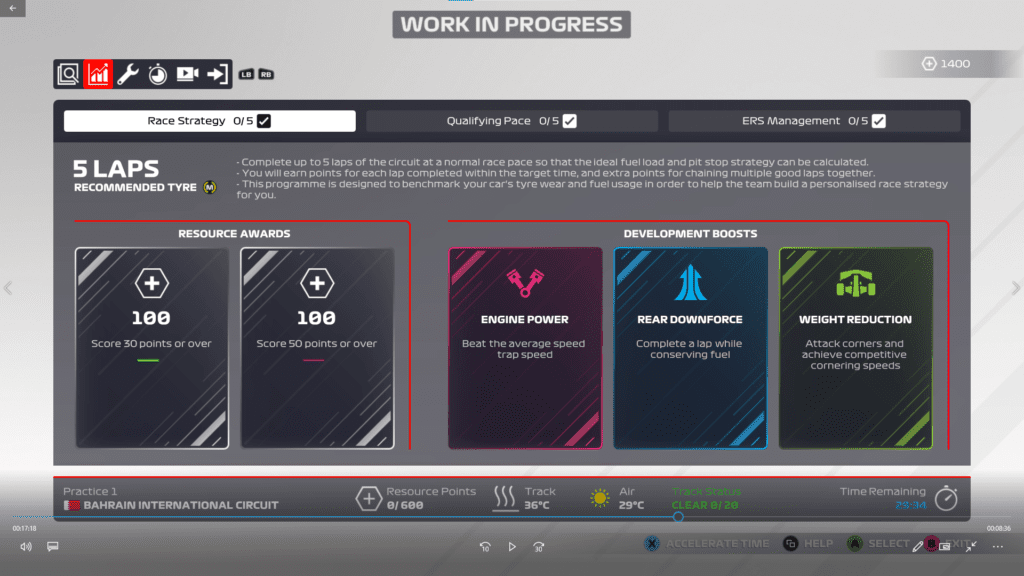
For example, the bog-standard Race Strategy challenge, which involves setting at least three, but up to five, consistent lap times pays out 100 resource points for doing okay and an additional 100 for exceeding the base-level target times. So far so vanilla.
But I received three boosts, which look to be randomly assigned from a long list. They were related to engine power (beat an average speed), rear downforce (complete a lap while conserving fuel, rather incongruously) and weight reduction (achieve competitive corner speeds). As you hit the track, the main target is referenced at the top of the HUD, but should you complete any of the boosts, a new graphic will appear on the left of your screen.
Successfully complete the main, ‘ordinary’, objective plus three boosts and you will net both resource points and a discount on upcoming car parts. This adds an extra dimension to the otherwise repetitive tasks, creating a second level of incentives for completing practice.
It should be noted, however, that stacking programmes like in MotoGP 21 is not available, which is frustrating with the development boosts, as multiple strands could often be easily accomplished in one or two laps.
How a Quick Practice works within F1 2021
A Quick Practice is another new option aimed at reducing the terminal boredom that will hit you usually three-quarters of the way through a full season.
It allows you to skip the actual driving in practice, but still earn development points and boosters.
A new minigame, you are presented with a list of practice programmes, each with the time it will take to complete and a percentage probability of it succeeding. Once selected, time speeds up and in a matter of moments, you’ll know if you’re laughing all the way to the imaginary resource points banks or shouting more expletives than Yuki Tsunoda in a qualifying session.
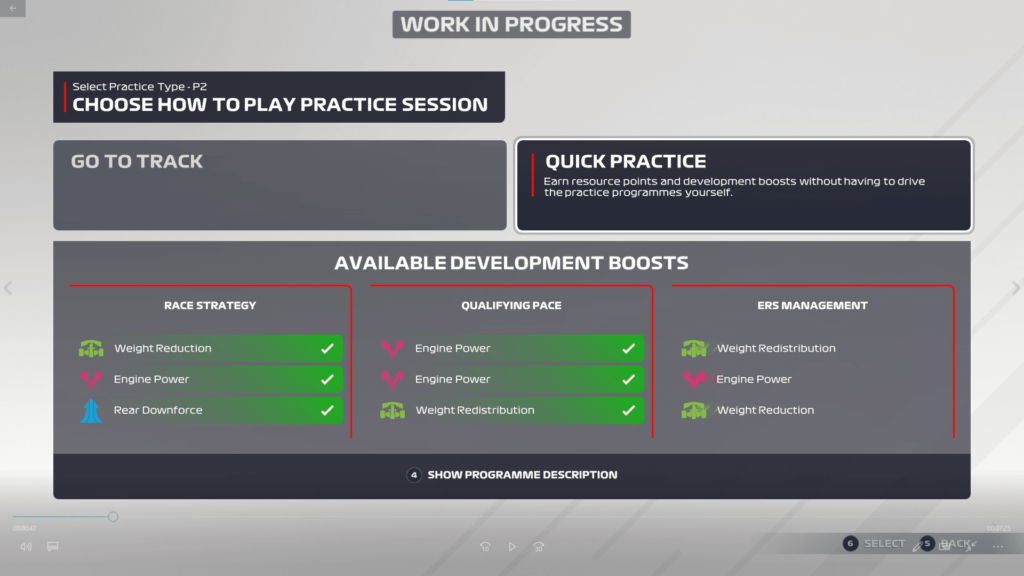
For example, I was quoted six minutes and 40 seconds to complete the ERS energy test with a 100 per cent chance of it succeeding. But next on the list was an engine power-related development boost which would take three and a half minutes and a 50 per cent chance of success. Or I could select another ERS programme for 100 extra resource points, but with only a 25 per cent chance of success.
It’s risk versus rewards and very simple in its execution. If any task fails, you simply waste time and gain nothing. I can imagine this relieving the burden of driving practice challenges, handy for those who just like to race through to the driver transfers and without a heavy penalisation on the car’s development.
The R&D tree has been replaced in F1 2021
Gone is the R&D tree, which had changed in layout, but was effectively identical across the past few games.
In its place is a fresh R&D menu, which at first looks like a revolution, but under the skin works in exactly the same way.
There are still four main car development areas, that of Aerodynamics, Chassis, Powertrain and Durability, but instead of being on some kind of alternative line graph, each department has its own menu area.
Within each, part upgrades are now depicted with snazzy wireframe drawings. A simple touch that brings more life to car development as you can see what each part looks like and therefore picture it on the vehicle. The title of each part is also much more detailed.
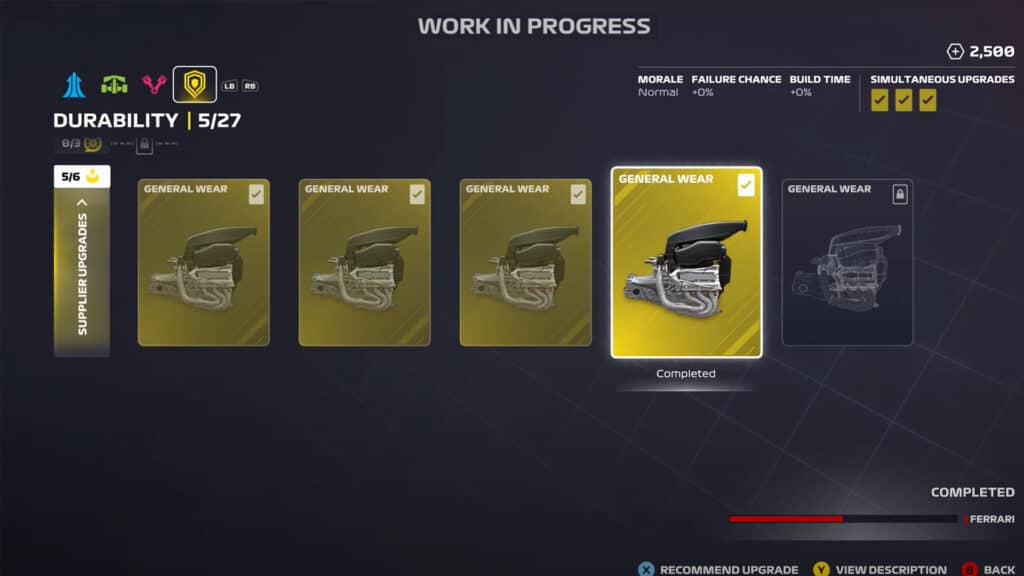
It’s not just the design and layout that’s been revised though. The process of spending your hard-earned points has also been mildly tinkered with. When you decide on what part to develop next, you are now presented with two timing options.
For example, for one part, I had a “standard” development option that would be ready for the 21st March and had a 20 per cent chance of failure. Alternatively, I could “Rush” the creation to be ready for the 15th March but with a heightened 45 per cent chance of failure. Much like previous F1 titles, if a part fails, you have to pay some additional points and wait longer for it to be completed.
So, in a way similar to the Quick Practice minigame, you now have to balance haste with reliability.
Finally, department morale also affects quality and timing, which changes based upon your post-race interview answers and in the pre-release build, development boosts reduced the price of parts by five per cent.
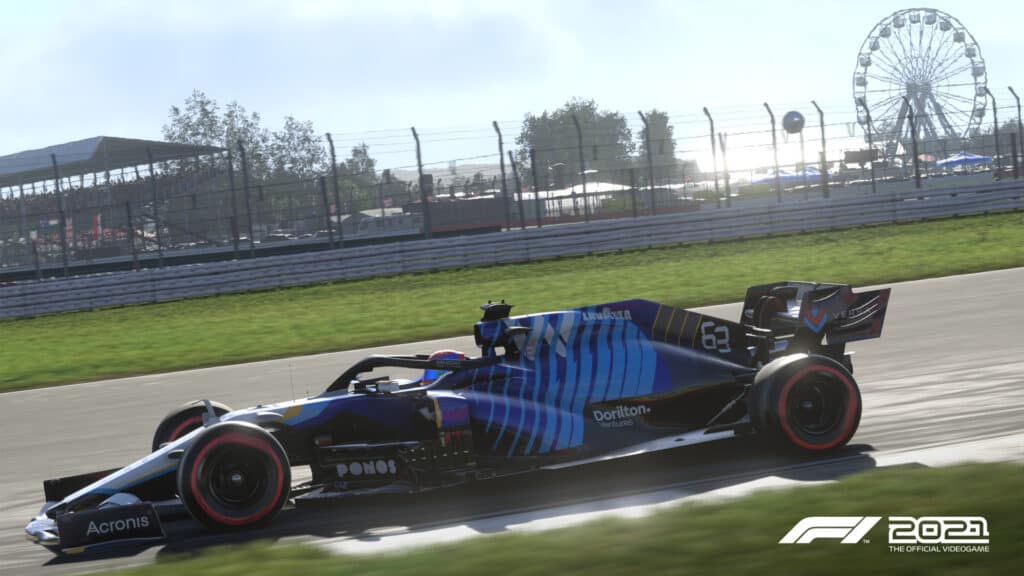
There isn’t a revolution here, but a series of not insignificant changes that all add up to create a reinvigorated experience. Clearly, the team at Codemasters Birmingham has been listening to fan feedback and especially for those who have played through multiple F1 games in a row, this should put a pep in your step.
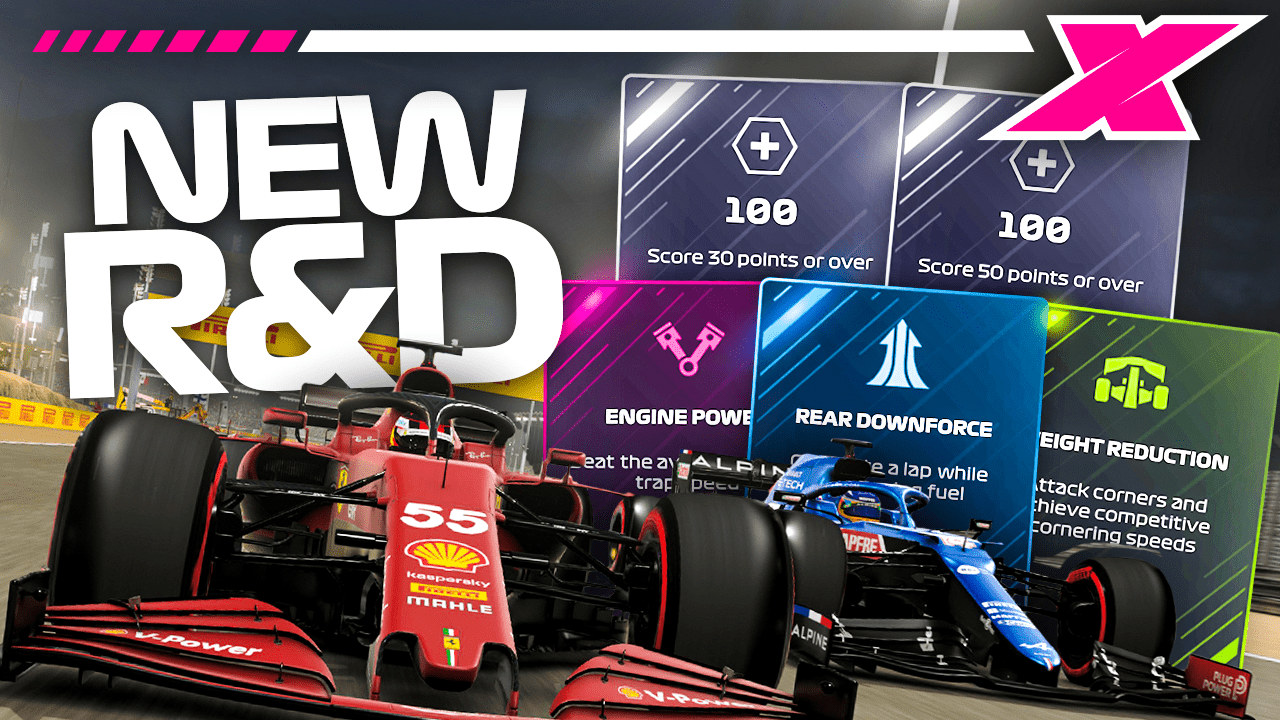




Chat with the Community
Sign Up To CommentIt's completely Free